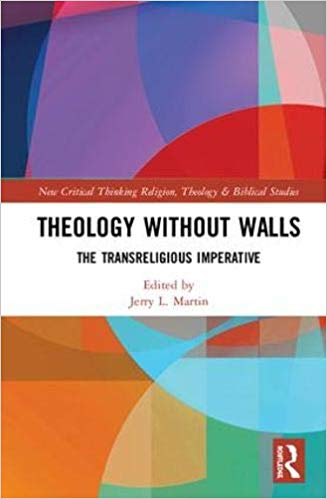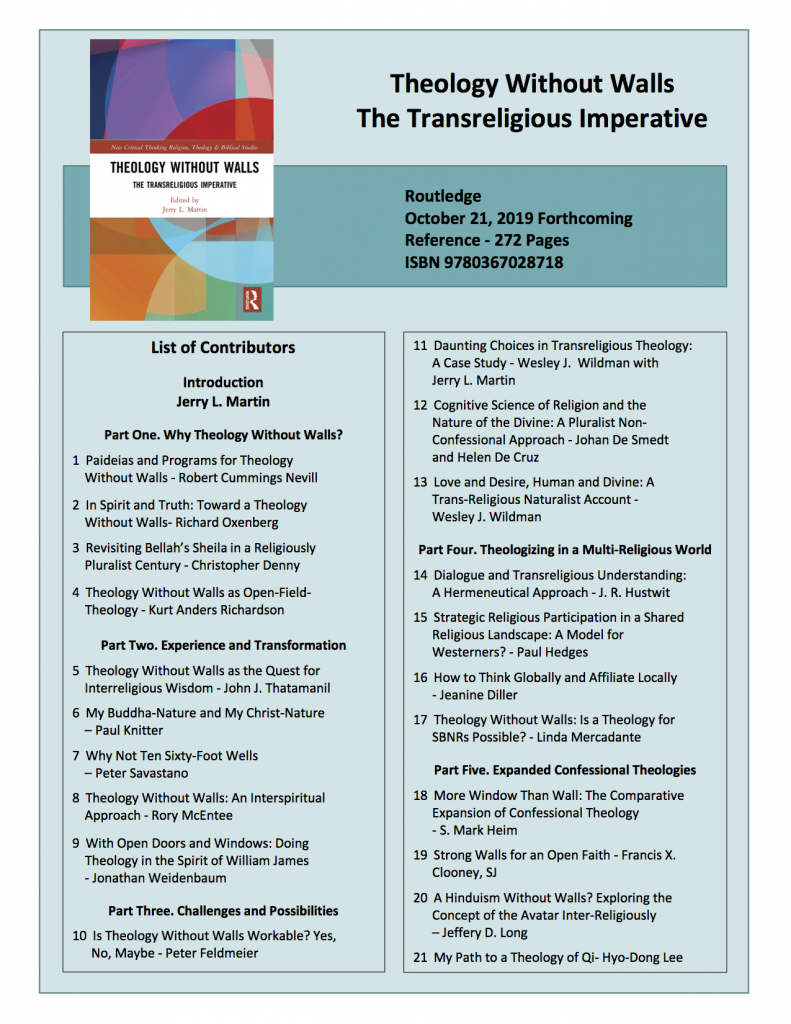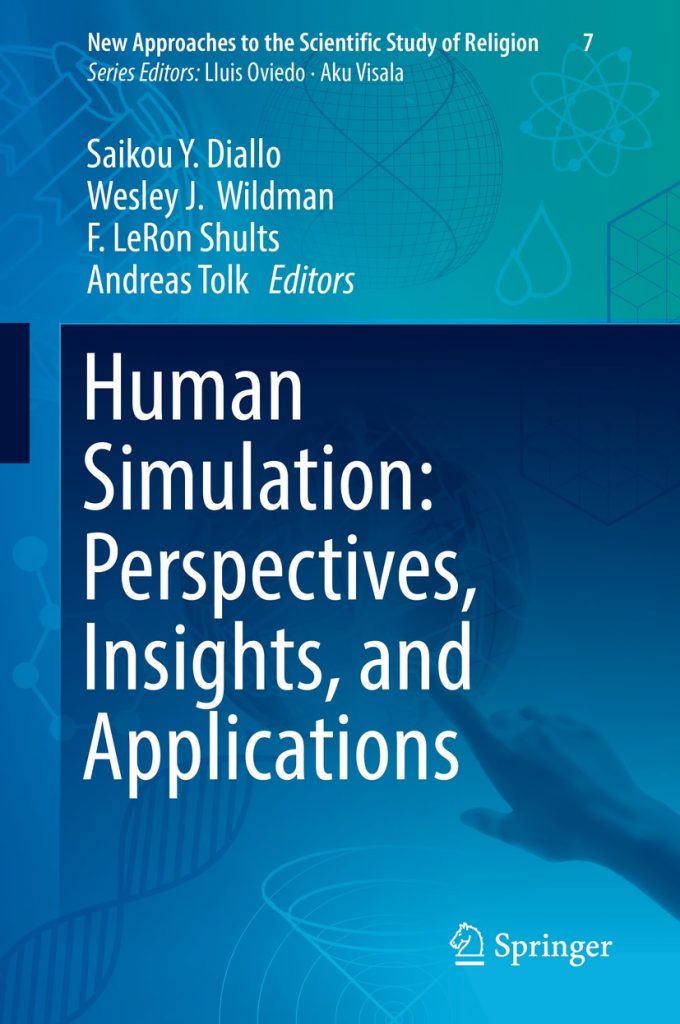For those of you are tracking the transreligious theology movement, a new milestone has been reached with the publication of Theology Without Walls: The Transreligious Imperative (New York: Routledge, 2019). Jerry Martin, the hero of this fledgling movement, edited the volume, incorporating inspirational essays from many of the movement’s leading lights.

Here’s what the Routledge site has to say about the book:
“Thinking about ultimate reality is becoming increasingly transreligious. This transreligious turn follows inevitably from the discovery of divine truths in multiple traditions. Global communications bring the full range of religious ideas and practices to anyone with access to the internet. Moreover, the growth of the “nones” and those who describe themselves as “spiritual but not religious” creates a pressing need for theological thinking not bound by prescribed doctrines and fixed rituals. This book responds to this vital need.
“The chapters in this volume each examine the claim that if the aim of theology is to know and articulate all we can about the divine reality, and if revelations, enlightenments, and insights into that reality are not limited to a single tradition, then what is called for is a theology without confessional restrictions. In other words, a Theology Without Walls. To ground the project in examples, the volume provides emerging models of transreligious inquiry. It also includes sympathetic critics who raise valid concerns that such a theology must face.
“This is a book that will be of urgent interest to theologians, religious studies scholars, and philosophers of religion. It will be especially suitable for those interested in comparative theology, inter-religious and interfaith understanding, new trends in constructive theology, normative religious studies, and global philosophy of religion.”
The table of contents is in the book’s promotional flyer.


